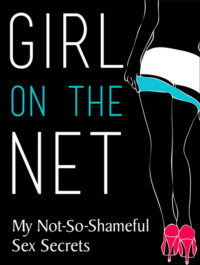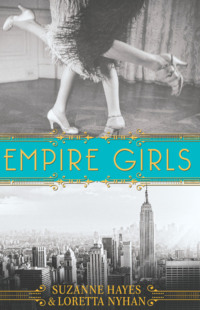
Полная версия
We Are Not Such Things: A Murder in a South African Township and the Search for Truth and Reconciliation
But on that day, the flat took on new characteristics. It was luxury, pure and simple, with its sturdy walls, its two secure locks, windows to protect against the elements, plentiful electricity, and a bathroom and toilet of its own. I stood in a scalding hot shower and felt filthy rich. I never wanted to go back to the townships and I wanted to go back immediately.
But you couldn’t just wander aimlessly around there. It was too far from town for a pop-in, and there weren’t, for example, coffee shops with Wi-Fi where a person could hang out. So I started to research various NGOs that did work there. I asked around, again surveying the people I knew, but I was only met with gestures of concern. It seemed that I was a not uncommon species of foreigner who thinks a bleeding heart or a hankering for a taste of “real Africa” will keep her safe as she wanders, smiling dimly and handing out lollipops, through destitute black areas. So in my search for volunteer work, I was met, several times, with the same question, uttered with a mixture of irritation and concern:
“Haven’t you heard of Amy Biehl?” people said. “Better not come down with Amy Biehl Syndrome.”

I was twelve when Amy Biehl was killed, and not up on international news, so I had never heard of her. Now, with no friends in South Africa and only a bit of freelance work trickling in, I had plenty of time to burrow into that Internet rabbit hole. I began to look into the story of the young white scholar attacked by the black mob. The tale had been covered at length, with over 100,000 search results on Google. For days, I read articles and studied images. The murder had been so odd, the fury so misplaced, and the choice of victim so ironic. The story, as it rolled out before me in backlit print, conveniently followed along the country’s timeline for the past nearly two decades: oppression, inequality, activism, protest, race-based violence, imprisonment, freedom, amnesty, reconciliation. Over the years, the headlines themselves traced the arc of recent history:
A BRUTALIZED GENERATION TURNS ITS RAGE ON WHITES
(The New York Times, 1993)
THREE BLACKS FOUND GUILTY OF “RACIST” KILLING
(The Herald, Glasgow, 1994)
SOUTH AFRICANS APOLOGIZE TO FAMILY OF AMERICAN VICTIM
(The New York Times, 1997)
4 SOUTH AFRICAN KILLERS OF U.S. STUDENT GET AMNESTY
(Chicago Tribune, 1998)
BIEHL PARENT, APARTHEID FIGHTER BRIDGE GAP
(The Santa Fe New Mexican, 2004)
IN SOUTH AFRICA, AN IMPROBABLE TALE OF FORGIVENESS
(Los Angeles Times, 2008)
This was a microcosm of South Africa for twenty years, and it was the hopeful story people liked to tell and be told. The oppressed, once driven to wanton disorder, now displayed an unreal spirit of forgiveness. They were led by Mandela himself, who, after twenty-seven years in prison, forgave his oppressors. At his inauguration, his jailer was given VIP seating. The end result was white people and black people who had endured a terrible time locked in an embrace. As far as stories go, Amy Biehl’s was pretty perfect in terms of PR for South Africa, the rainbow nation. And America, with its generous ambassadors in the form of Linda and Peter and martyred activist Amy, didn’t come out too badly either. The whole thing was so peculiar that I couldn’t stop reading about it.
Over dinner, I reported my findings to Sam, who had been fourteen at the time of Amy’s death and eighteen during the Truth and Reconciliation Commission hearings, and so remembered her name and the basics of the story, but not much more. I went over the murder, the particularly undeserving victim, the famed amnesty, the remarkable show of mercy, the close relationship between the mother and the men, who even called Linda Biehl “Grandmother” in Xhosa.
I mentioned it to my conservative in-laws, who didn’t understand why anyone would ever reward their daughter’s killers with a job. Their dinner guests were equally unimpressed by the tale—the general story they knew by heart but the details they only vaguely remembered. One posited that such a gesture might encourage other black folks to kill white girls in order to score jobs, and she could not be dissuaded by the fact that over the course of nearly twenty years, nobody had ever done such a thing. Later that week, as Sam and I sat in the park by the sea, I expounded upon the story again.
“You sound pretty interested in this,” he finally said. “Why don’t you write about it?”
In the following days, I tried to locate a book on the subject, convinced that surely somebody had already covered this singular story at length. Indeed, many journalists had filed reports in all forms of media. There had been documentaries and talk shows. A South African playwright, inspired by Linda Biehl’s act of compassion, had even written a fictionalized account, Mother to Mother, which she then adapted into a one-woman play that toured every few years. But nobody had ever written a book.
So I drafted a letter to Linda, and sent it to an email address at her Cape Town–based foundation. I explained myself: I would like to examine the story of Amy’s life, her death, and what happened after—including your and Mr. Biehl’s forgiveness of and relationship with Easy Nofemela and Ntobeko Peni, and the continued work of the foundation—and to write about it, possibly something book-length. I’d like to explore who Amy was and how she got here, as well as what her life and legacy means for South Africa today, nearly twenty years after her death and the end of apartheid.
Thirteen hours passed and then a little red circle appeared on my mail app: I would be happy to chat … almost 20 years has passed since the event occurred and the story like South Africa is very complicated. You are welcome to call.
3.
Show me a hero and I will write you a tragedy.
—F. SCOTT FITZGERALD
I called Linda Biehl in January 2012, a day after receiving her email. After her husband’s sudden death from colon cancer ten years earlier, Linda had sold her Newport Beach house and had thus far not settled down elsewhere. She kept no permanent residence, and instead hopped around the States, flashing her Delta gold card, crashing with her three surviving children in Florida, Pennsylvania, and California, and helping out with the grandkids—and there were six, divided among the households. Once or twice a year, she bought a ticket to South Africa and went to check up on her foundation. Universities and private organizations sometimes hired her to give a speech on reconciliation. Journalists writing about South Africa or forgiveness or an activist’s murder called her once in a while for a quote.
I’d expected a reticent woman, soft-spoken and probably super-Christian. How else, I wondered, but for a serious devotion to biblical standards with which I was admittedly unfamiliar, could a person so intensely forgive and love those who had so powerfully sinned against her?
“No, I find Christianity to be as hypocritical as anything in the world can be,” Linda said during our first conversation. I hadn’t asked her a thing about religion; Linda had just offered it up.
Linda was an engaging storyteller whose tales were dotted with full names of individuals both grand and obscure. She repeated her favorite stories at length, their details precise and unwavering, before she veered off, and I was left with notebooks full of loops, question marks, and arrows. And though she rarely paused long enough for anyone to interrupt her, I soon found that she would eventually, unaided, answer any question I might have, and more. Simply put, she spoke so much and had presumably been asked the same predictable questions so many times that she ended up covering nearly every relevant topic without being asked.
“Religion has nothing to do with it,” she said during the first conversation.
I wanted to ask: So what does have to do with it? But she was already talking about her fascination with traditional Xhosa beliefs, and about how she once got sick swilling home brew in an unsealed clay mug in the township. She talked about how the white dinner party circuit bored and upset her; she recalled how a wealthy Cape Town hostess had once asked her to lie silently on a reclining chair in the parlor of a mansion and listen to classical music before eating delivery pizza—a misguided attempt at highbrow entertaining.
“I blame sanctions!” she said. Apartheid-era sanctions were imposed on the country by an international community that had, by the 1980s, become increasingly disapproving of the country’s race-based legislation. Sanctions deprived South Africans of Western popular culture, prevented their beloved Springbok rugby and cricket teams from competing internationally, stymied the economy, and forced the elite to make up their own weird interpretations of European-style sophistication. White people tended to be obsessed with Europe and America, and they craved the fancy mores practiced in those far-off lands. But they were separated from them, and could only turn to each other. The result, which endured, seemed to be that a group of people, using rumors passed down from those who had visited abroad, had more or less imagined a collection of styles and manners. The older set still adored frilly and opulent furniture set up in odd configurations and stared down upon by a collection of stern, literal oil paintings.
Linda talked about her love of jazz and art history and about her grandkids. One was an actress. Two were star athletes. One played the drums. Her youngest granddaughter, then five years old, reminded everyone of a little Amy: spirited, energetic, sweet. Sometimes the little girl, absorbed in play, would look up and say, “I’m with Aunt Amy now.”
In 2012, Linda was trying to pull out of the foundation and devote herself entirely to her family in America, but she seemed incapable of truly making the move, tethered to the country that took her daughter from her. She talked affectionately about Easy and Ntobeko, whom she seemed to care for as if they were her own occasionally wayward and disobedient middle-aged man-children. Ntobeko was her favored son; his many accomplishments, large and small, filled her with pride. She talked about how these new relationships had cost her friends from the old days, people who had known her before she became, suddenly, a part of South African history and a paragon of reconciliation.
“I myself am a figure of curiosity and controversy,” she said, sighing. “Sometimes I wonder how and why did I ever do this?”
For the next four months, in an attempt to acquire a satisfactory answer to the question Linda had posed, I interviewed her over the phone. I visited a professor at the University of Cape Town and convinced him to sign off on a guest researcher pass. I spent weeks in the airy college library, combing through files, books, old clippings, and reports. I relentlessly chased after Easy and Ntobeko, with varying degrees of success, as they both tried politely to avoid me.
After a few months of research, I was convinced that I’d stumbled upon a story that needed telling—or, perhaps more honestly, that I desperately needed to tell. Amy was my entrée into this strange world. She had come here with purpose, just twenty-five years old when she left home, and she had tried her best to understand a pulsing South Africa in the midst of revolution. She had died in her quest. I had come here without any such noble purpose, thirty years old, and now I, too, wanted to understand a new South Africa.
The men I would be writing about were the ultimate “other”: poor, black, South African men, convicted murderers, reformed radicals living in a sort of modern wasteland, at once nursing the wounds of apartheid and—if you believed the “Africa Rising” magazine covers that hit the stands annually, emblazoned with the acacia tree set against an incandescent setting sun—heading toward a brighter future. The men had grown up with little education in an urban tribal culture that placed abiding value on ancient Xhosa traditions. And they now lived in this new rainbow nation, that enduring nickname given to post-apartheid South Africa by Archbishop Desmond Tutu, who was trying to celebrate the country’s racial and cultural mishmash. I hoped that in understanding these men, I could understand how a country broken apart by a system of colonization, segregation, and dehumanization could heal, reconcile, and move forward. This small, fierce story would tell the larger story of the New South Africa, and of the redemptive power of forgiveness in the face of tragedy.
But you won’t read about that here. That old narrative, the one I was following as I began my research, fell ill early on and perished about a year in. In its stead, a different story emerged.
When I started my work, I didn’t understand the complexities of the Truth and Reconciliation Commission, or of South Africa, or, I suppose, of true-life stories in general. I assumed there were clear-cut narratives in the country, with good and bad protagonists and antagonists, and that I would simply tell one of them. But as the Johannesburg-born journalist Rian Malan wrote, “In South Africa, it’s like a law of nature: there’s no such thing as a true story here. The facts might be correct, but the truth they embody is always a lie to someone else … Atop of all this, we live in a country where mutually annihilating truths coexist amicably. We are a light unto nations. We are an abject failure. We are progressing every day as we hurtle backward.”
Early on, I became convinced, naively, that with enough frenzied effort, I could find the Big Truth about the Amy Biehl story. I was after the objective truth: that elusive creature, a forensic reality that conformed to proven or provable facts, something mathematical and scientific and doubtless. But Easy, the man who over the years brought me closest to this truth and led me farthest from it, broke it down for me.
We were sitting across from each other at a linoleum table at the Hungry Lion fast food establishment in downtown Cape Town. Easy was wearing his buttercup-yellow Paul Smith polo, which he bought from a Nigerian who dealt in cut-rate fine garments, which were either stolen or counterfeit, it was hard to tell. He was drinking a ginger soda and I was spitting questions at him.
Months earlier, Easy had christened me Nomzamo, a Xhosa name. All Xhosa names have literal meanings that are reflections of a person’s character or the hopes of the parent for the child. Nomzamo comes from the Xhosa word zama, “to try.” It can be interpreted as “she who strives and perseveres” or, probably, in my case, “pain in the ass.” Easy had explained it as: “You always try, try, try. It’s a good name.”
“What do you really want to know?” he finally asked, looking at me with a mixture of compassion and bewilderment. He was wiping the grease from his fingers onto a paper napkin.
“I want to know the truth!” I exclaimed.
Easy studied me for a moment and then broke into guttural laughter.
“Nomzamo, Nomzamo, Nomzamo,” he said. “The truth is not anymore existing for years and years.”
4.
He who fights with monsters should be careful lest he thereby become a monster.
—FRIEDRICH NIETZSCHE
Конец ознакомительного фрагмента.
Текст предоставлен ООО «ЛитРес».
Прочитайте эту книгу целиком, купив полную легальную версию на ЛитРес.
Безопасно оплатить книгу можно банковской картой Visa, MasterCard, Maestro, со счета мобильного телефона, с платежного терминала, в салоне МТС или Связной, через PayPal, WebMoney, Яндекс.Деньги, QIWI Кошелек, бонусными картами или другим удобным Вам способом.











